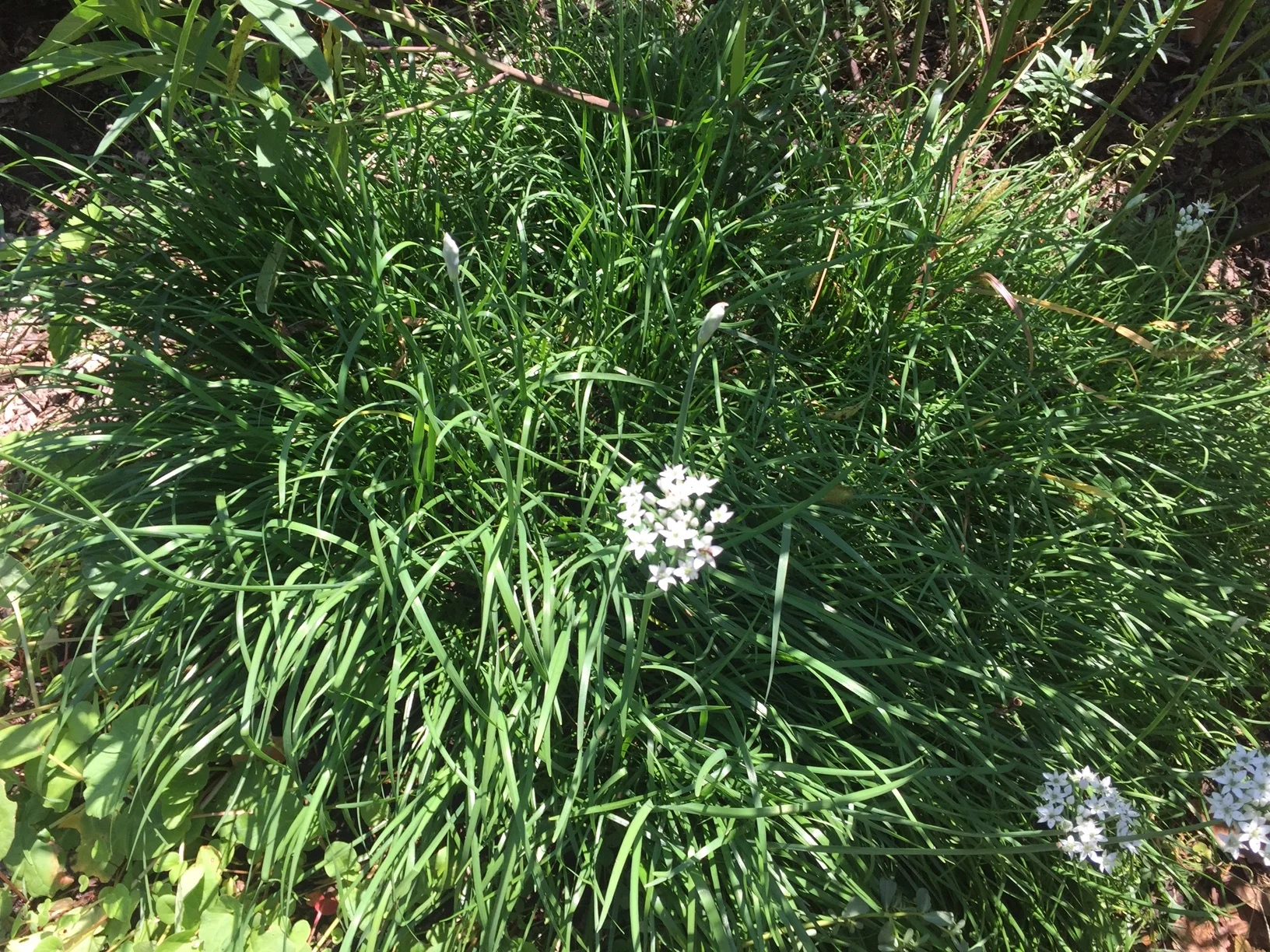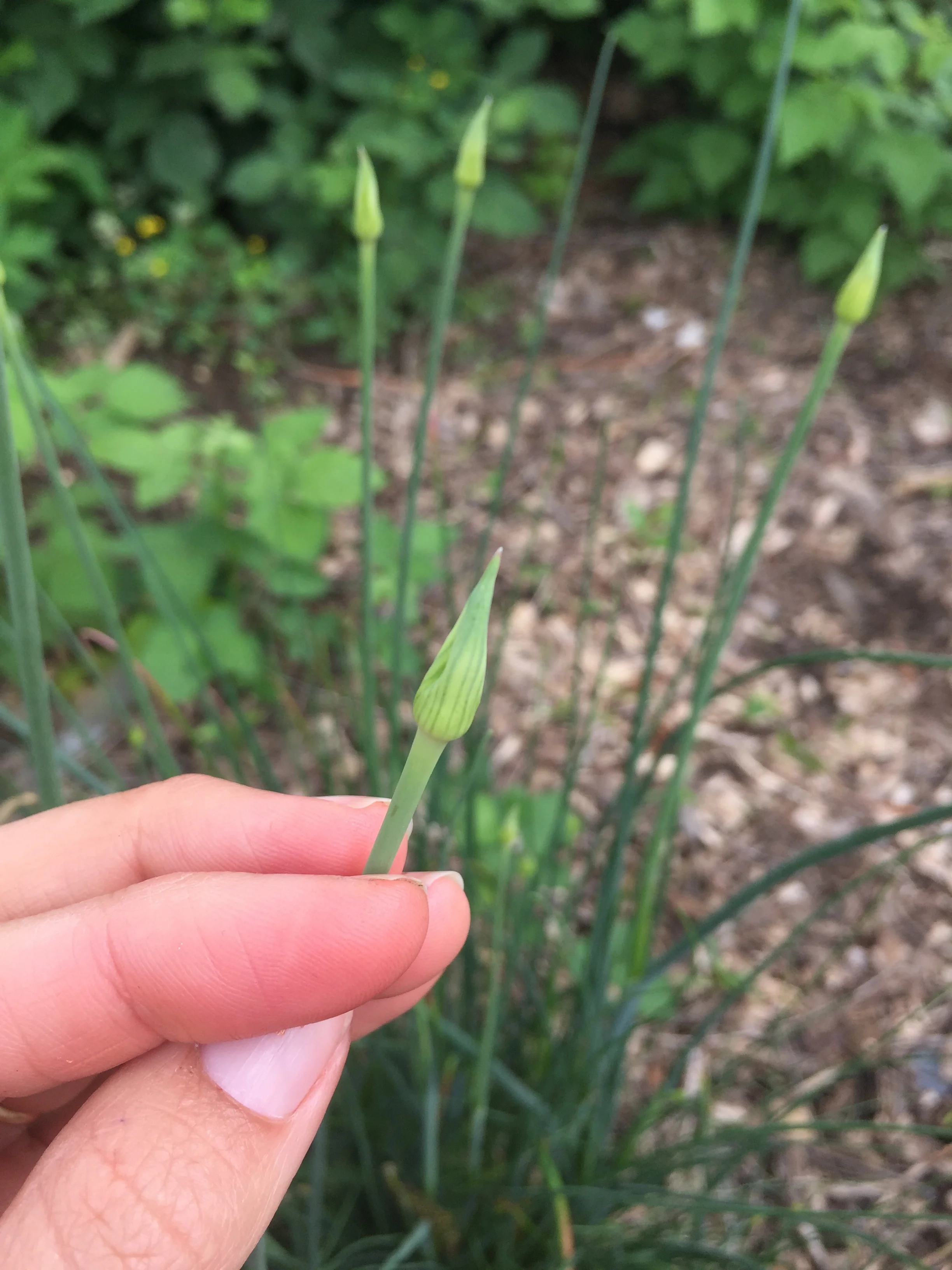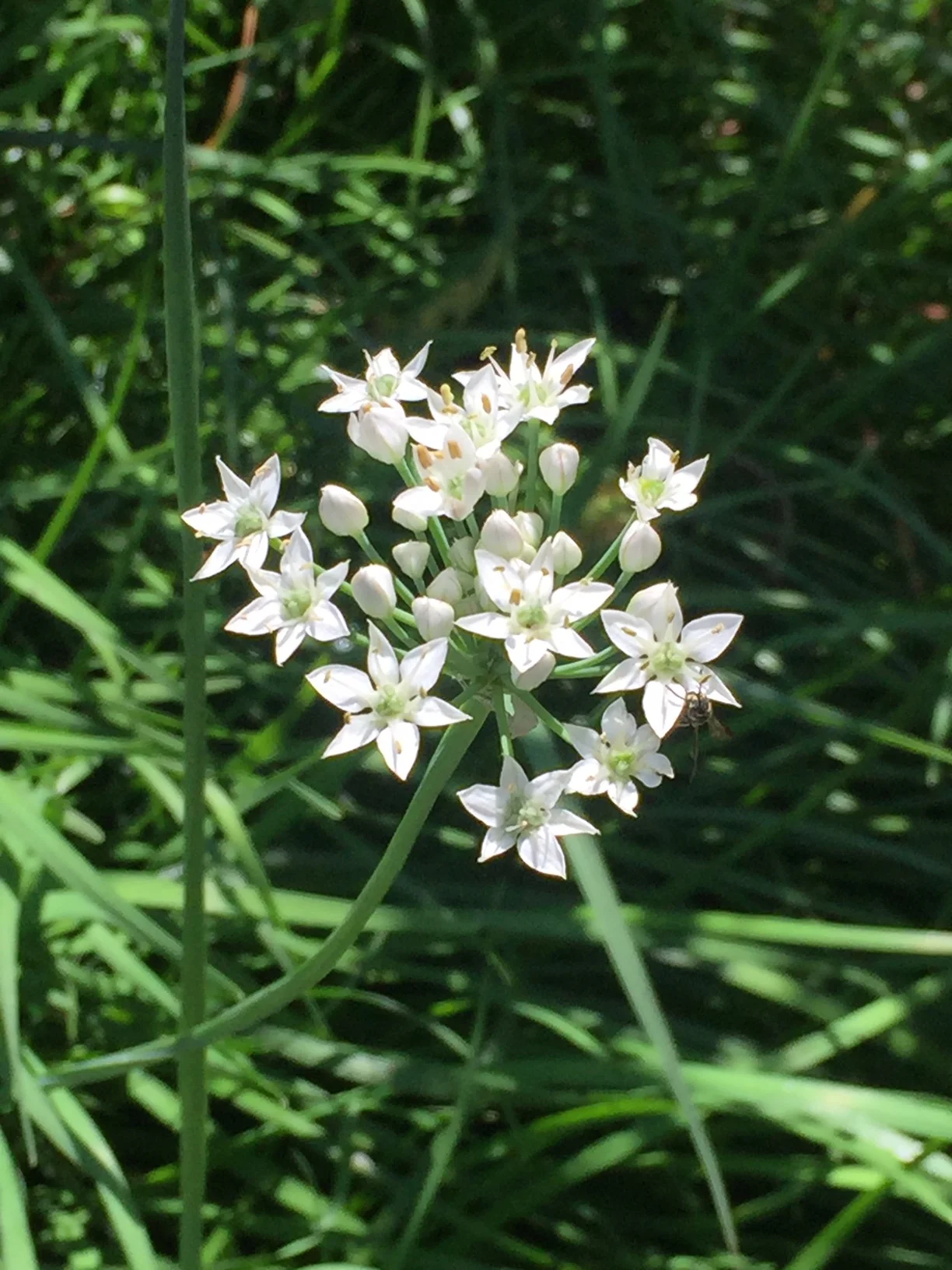Garlic Chives




Garlic Chives
Allium tuberosum
Plant for perennial garlic flavor, for pest repelling, and to keep involuntary emissions to a minimum!
Each order is a bundle of multiple rootlets.
Hardy from Zones 4-10. Up to 1 foot tall and wide.
We like Garlic Chives for the white flowers. And for the mild Allium flavor. Also for the Allium smell that deters rodents and insect pests. That flavor and smell work wonders in a salad or soup, adding good protein, carbs, and little bit of vitamins. The genus name, Allium, actually refers to avoiding offensive smells, but we like them even if other critters don’t. We stick the bulbs, or scatter seeds, around fruit trees and in insectary beds throughout annual gardens, making sure they have the sun they like and well-drained soil. The bulbs spread in small clusters through rhizomes. Lift the whole clump and chop up the bulbs, or just cut back the green straps for a garnish.
Chives have been a culinary staple for centuries in East Asia. The Allium genus includes 800 species worldwide, but Chives hail from southwestern Shanxi, a province in China. In fact, they’re also called Asian Chives or Chinese Leeks, names which honor their origin. In China, Japan (where they’re known as nira), and Korea (buchu), the leaves are added to stir fries, dumpling recipes, and soup with rice. In northeastern states of India like Manipur, Chives are grown as substitutes for garlic and onions. Nepalese, Thai, and Vietnamese cuisines also commonly use Chives, and Dungan farmers (Muslims of Chinese origin) introduced Chives to cooking in Kazakhstan.
This small plant aids digestion and is an anti-emetic (vomit-preventing) herb for improved kidney health. Ayurvedic and traditional Chinese medicine have used them for a long time to treat spermatorrhea, or excessive and involuntary ejaculation believed to indicate kidney problems. A couple of centuries ago, doctors diagnosed patients with spermatorrhea, or seminal weakness, if they ejaculated more than was considered usual, and also outside of marriage.
We propagate our Chives from seed and root divisions. Each order will have 5 rootlets.